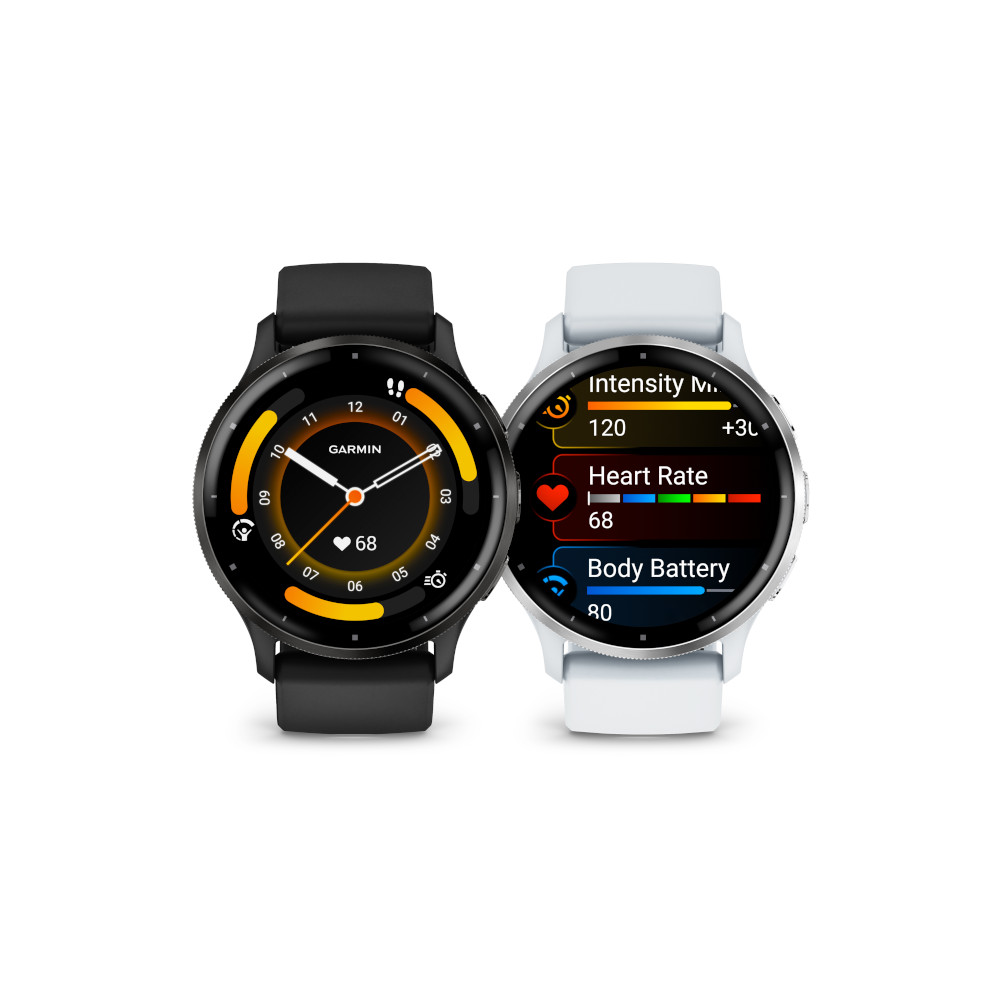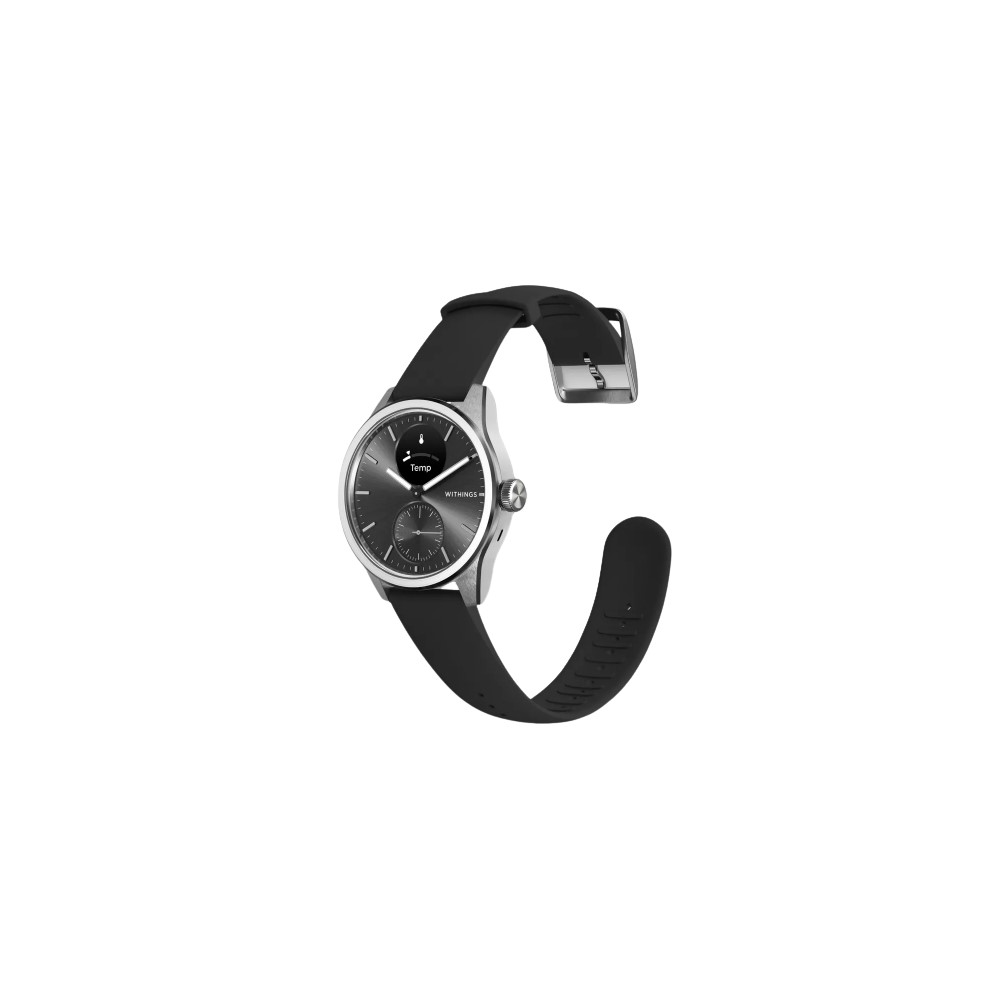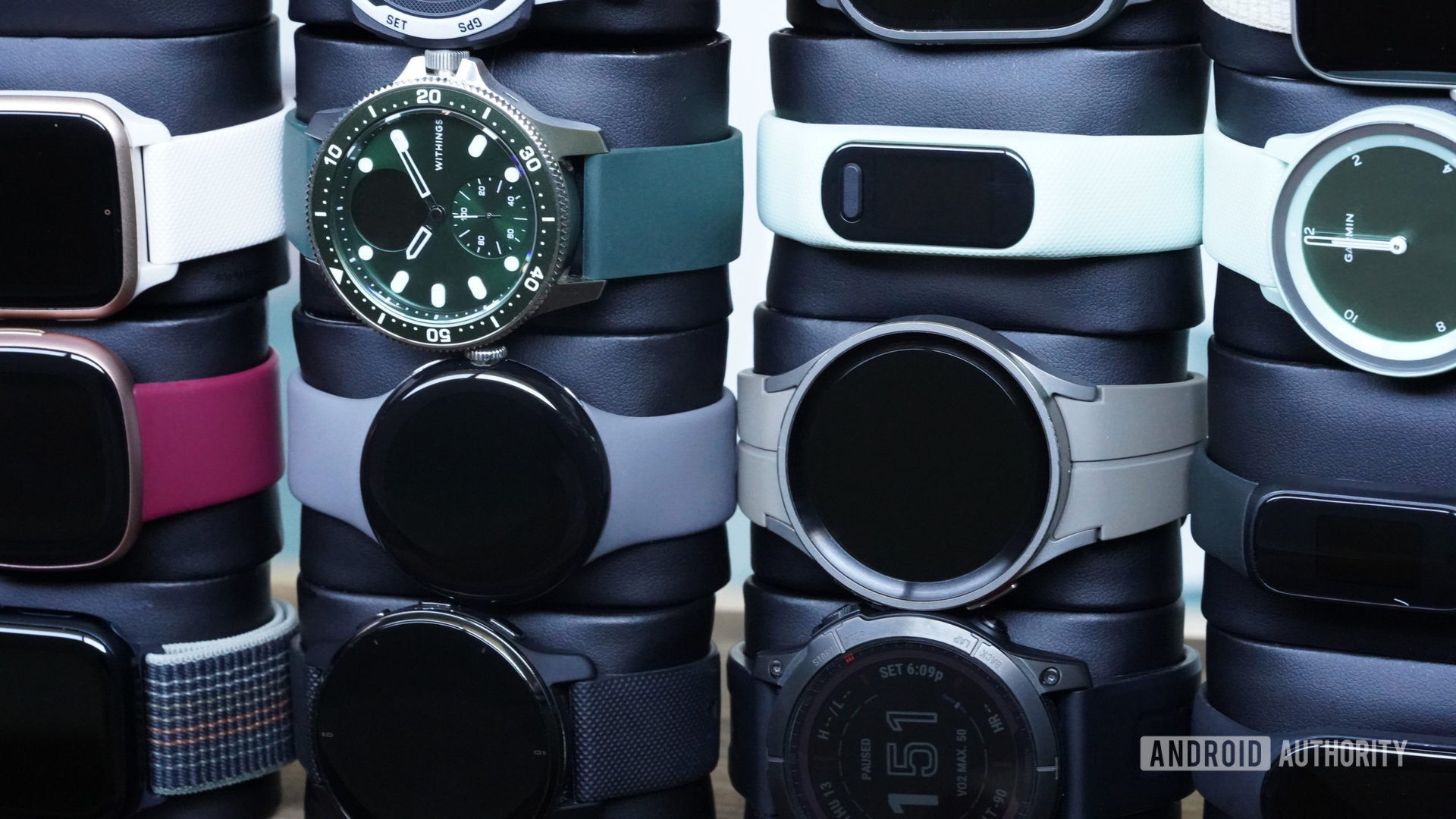Affiliate links on Android Authority may earn us a commission. Learn more.
I've tested smartwatches for Android and iPhone for years: These are the only picks I'd buy in 2025
Updated on April 22, 2025
Smartwatches are no longer a novelty. I see more wrists strapped into wearables than analog timepieces on a daily basis. Yet, a growing market only means more room for competition and a more confusing shopping experience. After testing countless smartwatches over the years, I’ve honed in on what makes a device the most valuable, including user experience, feature set, fitness tracking tools, and sensor package, without forgetting about comfort and looks. Depending on what ecosystem you belong to, the watches below represent the top smartwatches I recommend.
Google Pixel Watch 3: The best smartwatch for Android users


- Larger, secondary case size
- Multi-day battery life
- Added wellness features, including advanced running metrics
- Refined integration with Pixel phones and Google services
- Accurate heart rate tracking
- Runs Wear OS 5
- GPS unimproved from Pixel Watch 2
- Inconsistent total distances
- Higher price than GW7 (but worth it)
When Google officially entered the smartwatch race, the company had a bit of a jerky start. The first generation introduced an attractive look but fell painfully short in other areas, especially battery life. The second generation cleaned up some of the line’s early issues but still didn’t offer an experience quite as refined as other brands. Fortunately, the company’s growing pains seem to be behind them, as the Google Pixel Watch 3 proves a fantastic device worthy of being called the best Wear OS smartwatch available.
Launched with Google’s latest software on board, the Pixel Watch 3 offers a pure and powerful Wear OS 5 experience, including upgraded integration with Pixel phones and other Google products and services. Thanks to built-in Fitbit health and fitness tracking tools, the watch also features a robust wellness platform. I found the GPS a little shaky during some workouts, but the heart rate accuracy is genuinely staggering.
What’s more, Google also introduced a second case size, offering a better fit for more wrists. Both models retain the same minimalist design users fell in love with but now feature better display specs, shrunken bezels, and better battery life. For the first time, the Pixel Watch 3 is a true multi-day device.
Apple Watch Series 10: The best smartwatch for iPhone users


- Increased display size
- Thinner, sleeker build
- FDA-approved sleep apnea detection
- Useful watchOS 11 updates and additions
- Faster charging
- Same 18-24 hour battery life
- No SpO2 measurements disabled in US
- Vitals app somewhat simplified
It’s genuinely hard to beat an Apple Watch if you’re a shopper within Apple’s ecosystem. The lineup features unmatched third-party app support and seamless integration with iPhones. My device is loaded with everything from Spotify to Audible, and it’s where I field 90% of my notifications and review 100% of my wellness stats most days. Though somewhat stagnant, the company’s well-known aesthetic is also clean and elegant, especially if you prefer a square display to fit more text. Meanwhile, watchOS improves year after year, delivering a more powerful experience to users’ wrists.
Like its predecessors, the newest Apple Watch Series 10 offers a dynamic, feature-packed smartwatch experience. Starting with its build, the series is available in two increased case sizes that are both thinner and sleeker. The lineup also features the largest usable display area yet on any Apple Watch, and the on-wrist look and feel is quite elevated. Though we didn’t see any improvement to battery specs, the watches charge remarkably fast, powering up from zero to 55% in just twenty minutes during my review.
For fitness tracking, the Series 10 packs a bevy of sensors, including a depth gauge for snorkeling, a heart rate sensor that can keep up with a dedicated chest strap, and GPS tracking that matches routes recorded by much higher-end GPS watches. In other words, I’ve found the Series 10 a highly reliable workout companion. Thanks to watchOS 11, users will find more advanced training tools and an upgraded workout app for recording even more stats. The watch also tracks everything from sleep to stress and will even detect signs of sleep apnea.

Samsung Galaxy Watch 7: The best smartwatch for Samsung phone users


- Useful new Energy Score
- Sleek, refined design
- Familiar Wear OS experience
- Easily interchangeable watch bands
- Reasonable price
- More accurate heart rate monitor
- Some Samsung-exclusive features
- GPS tracking still struggles with tall buildings
- Still mostly minor updates
- Battery life is good but not great
Samsung’s stable remains the best place to shop if you’re a Samsung phone user, and the Galaxy Watch 7 continues the company’s trend of launching successful Wear OS devices year after year. The smartwatch offers a familiar software experience, with Wear OS 5 running under Samsung’s One UI 6 Watch overlay, plus a whole layer of powerful Galaxy AI-powered metrics and tools, like Energy Score, Race Partner, and sleep apnea detection.
I was especially excited to see that heart rate monitoring improved on the newest model. Of course, if you want a larger, more rugged build with better battery life and accurate GPS tracking, Samsung also launched the Galaxy Watch Ultra ($649.99 at Amazon) at a much higher price point.
Garmin Venu 3: The best smartwatch for detailed fitness tracking


- Highly accurate GPS and heart rate sensors
- Automatic nap detection and sleep coaching
- On-device phone call and voice assistant support
- Up to 14-day battery life
- Larger display
- Pricey compared to competitors
- No LTE model
- Limited third-party app support
The Garmin Venu 3 is easily one of the best Garmin watches you can buy and the best pick for anyone in need of a more fitness-focused wearable. The dual-sized lineup boasts top-tier multi-GNSS, and I found that the GPS tracking on the Venu 3 is incredibly accurate, especially for a smartwatch rather than a dedicated GPS wearable. If you’re a runner or cyclist, this is a huge highlight. On the heart rate monitoring front, the Venu 3 features an Elevate V5 optical heart rate sensor, which I found highly reliable, and the sensor is even certified to provide ECG readings. It also has training tools like Recovery Time, Workout Benefit, and Perceived Exertion. As for smartwatch features, the device is a bit leaner than others on this list. It offers phone call support and voice assistant compatibility when a paired phone is nearby, music storage, and an onscreen flashlight feature.
OnePlus Watch 3: The best smartwatch for battery life


- Fantastic battery life
- Powerful Wear OS 5 platform
- Functional rotating crown
- Spacious, colorful display
- Bulky single case size
- Some features unavailable at launch
- Imperfect heart rate and GPS data
- No LTE model (yet)
Another solid option from the Wear OS family worth considering, the OnePlus Watch 3 features dual-chip architecture, housing the Snap W5 running Wear OS 5 plus a second “efficiency chipset” for running RTOS. This creates a dynamic user experience with distinctive use modes for extreme battery savings. In smartwatch mode, the watch lasts up to 5 days between charges. In Power saver mode, Wear OS disappears from the user experience, stretching battery life for days more while still offering basic smart features and wellness tracking functions. During my review, I found the software experience smooth and the device responsive in both modes. It is, however, only available in one 47mm case size, which may be too large for some wrists.
Mobvoi TicWatch Pro 5 Enduro: The best smartwatch for a unique, battery-saving display

- Dual display is fantastic
- Updated digital crown
- Improved durability
- Same snappy performance
- Doesn’t run the latest Wear OS
- No wireless charging
- Only available in one size
- No LTE model
Mobvoi’s TicWatch Pro 5 Enduro is one of my favorite devices for a truly unique dual-display that facilitates excellent battery life. The watch is also durably built with Sapphire glass and a functional rotating crown for smooth navigation. Its GPS performed well during my review period, and I am a big fan of the color-coded heart rate zones for fine-tuned training. However, my hesitation in recommending this watch is that it still runs an older Wear OS, while other companies stretch the gap with newer, more powerful software. I would love to see a rollout schedule to feel confident that the device will eventually see a Wear OS 5 update.
Withings ScanWatch 2: The best hybrid smartwatch


- Premium, classy design
- Up to 30-day battery life
- Broad health tracking tools
- Useful fitness tracking
- Available in two sizes
- Limited display space
- High price point
- No built-in GPS
- Few smart features
The Withings ScanWatch 2 is my specialty pick, with a classy, analog form factor and undercover advanced health tracking. The device offers a medical-grade ECG monitor, pulse oximeter, and 24/7 heart rate monitoring. It will notify you of warning signs of bradycardia and tachycardia and provide ECG readings on demand. It also boasts sensors for measuring skin and ambient temperatures, plus overnight blood oxygen monitoring and respiratory scans for detecting warning signs of sleep apnea. It’s proved a highly reliable sleep tracker through my review period and offers the longest-lasting battery life of any device in this list. Personally, I also love the addition of detailed female health tracking on-device, plus automatic workout detection for more than 40 activities.
Garmin Fenix 8 AMOLED: The best ultra-premium smartwatch


- Bright built-in flashlight
- Excellent battery life
- Accurate activity tracking
- Three case sizes
- Punchy speaker
- Sharp AMOLED face
- Proprietary charging cable
- Titanium costs extra
- Bulky on smaller wrists
- Very expensive
The Venu 3 is great, but the Fenix 8 AMOLED is the absolute best Garmin watch and the best ultra-premium smartwatch that money can buy. Its three case sizes (41mm, 47mm, and 51mm) make it so that there’s a Fenix for almost every wrist, and the new microphone and speaker mean you don’t need another smartwatch for your everyday life. In fact, Garmin’s new support for voice assistants means that the Fenix 8 AMOLED is better able to compete with Ultra-branded wearables from Apple and Samsung, yet offers significantly better battery life than either one with up to 16 days from the 47mm model. The Fenix 8 AMOLED isn’t just a pretty face, either, combining the reliable Elevate V5 heart rate sensor with an impressive set of workout tools like Training Readiness, Body Battery, and more activity types than I’ve managed to use in my month with the watch. Although the Garmin Fenix 8 AMOLED might be a bit too rugged for some casual wearers (and cost a bit more than most will want to pay), you’ll be hard pressed to find a watch with more adventure behind its crisp, vibrant display.
What to look for in a good smartwatch
Knowing where to start is not easy if you’re shopping for your first smartwatch. Software experience and compatibility are crucial, but don’t always narrow the field enough. You’ll also want to determine what your priorities are in terms of features and specs. Do you want an extension of your phone, or are you interested in tracking intense workouts or advanced health stats? Does daily charging sound cumbersome? The topics below are all points I think are worth considering before you commit to any of the smartwatches I’ve recommended in this guide, or generally on the wider market:
- Is it compatible with your phone (Android or iOS)?
- Does it run the latest software version?
- Is the brand renowned for good update consistency?
- What is your budget?
- Does the smartwatch have first- and third-party app support?
- How good is the battery life?
- Does it cater to your fitness tracking needs?
- Does it have onboard or connected GPS (preferably the former)?
- How accurate is the heart rate tracking?
- Does it have SpO2 monitoring?
- Does it have accurate sleep tracking?
- Can it take on-wrist phone calls?
- Is there a voice assistant for hands-free use?
- How does it handle notifications?
- Does it have digital payment support?
- How useful is the companion app (and does it have one at all)?
- Is the fit comfortable?
- Does the look match your aesthetic?
Why you should trust me

I’ve been professionally testing and reviewing wearables for years, dating back to before Samsung teamed up with Google for the Wear OS we now know and love, and long before Apple launched its first-generation, massive Ultra. I’ve reviewed dozens of smartwatches, fitness trackers, dedicated heart rate monitors, smart rings, sleep trackers, exercise equipment, and health and fitness apps and platforms. In other words, I’ve sweated my way through a ton of products to learn what makes them valuable and what features matter most.
I've been professionally testing and reviewing wearables for over three years.
At the start of every review, my focus is twofold: user experience and value. First, I approach each product as a typical user, noting everything from comfort and design to performance and features. I fire off texts, download apps, and tap into everything from timers to gesture controls. To dig even deeper, I bring expertise and comparable metrics to the conversation, using tools like heart rate monitors, pedometers, pulse oximeters, and trusted sleep trackers and GPS devices. I create varied workout plans to test fitness tracking accuracy and closely monitor my stress and sleep to review recovery metrics. Above all, I wear the device consistently to garner a thorough understanding of what it offers and what it’s like to own. I also simultaneously use competitors’ products to compare differences and collect comparative data.
What is your favorite smartwatch brand right now
When all that is done, I sit down with the wearable and all the details I’ve collected to evaluate its value. This means establishing its place in the larger market and determining whether its price is fair for what it offers. If a product boasts a large feature set but doesn’t deliver accuracy, it may not be worth its price. Conversely, if a wearable successfully executes more tools than competitors of equal price, I rate it higher.
Typically, my review period lasts at least a week, giving me time to explore the product fully. For some launches, this process can extend to weeks or months. I also revisit the devices I test regularly to check in on software updates and feature drops and to make sure my original findings stand the test of time.